To put it kindly, it might seem impractical to enter the crowded sparkling water market today. To put it bluntly, it might seem absolutely batshit.
LaCroix. Perrier. Topo Chico. Bubbly. San Pellegrino. Spindrift. There are dozens of value brands, private labels, and beyond.
So how did the oddball upstart Aura Bora—with its eccentric packaging and its equally offbeat flavors and ingredients—do it . . . and do it so well that the company sold 15 million cans in its first four years, and is currently on pace to sell 15 million more in 2024?
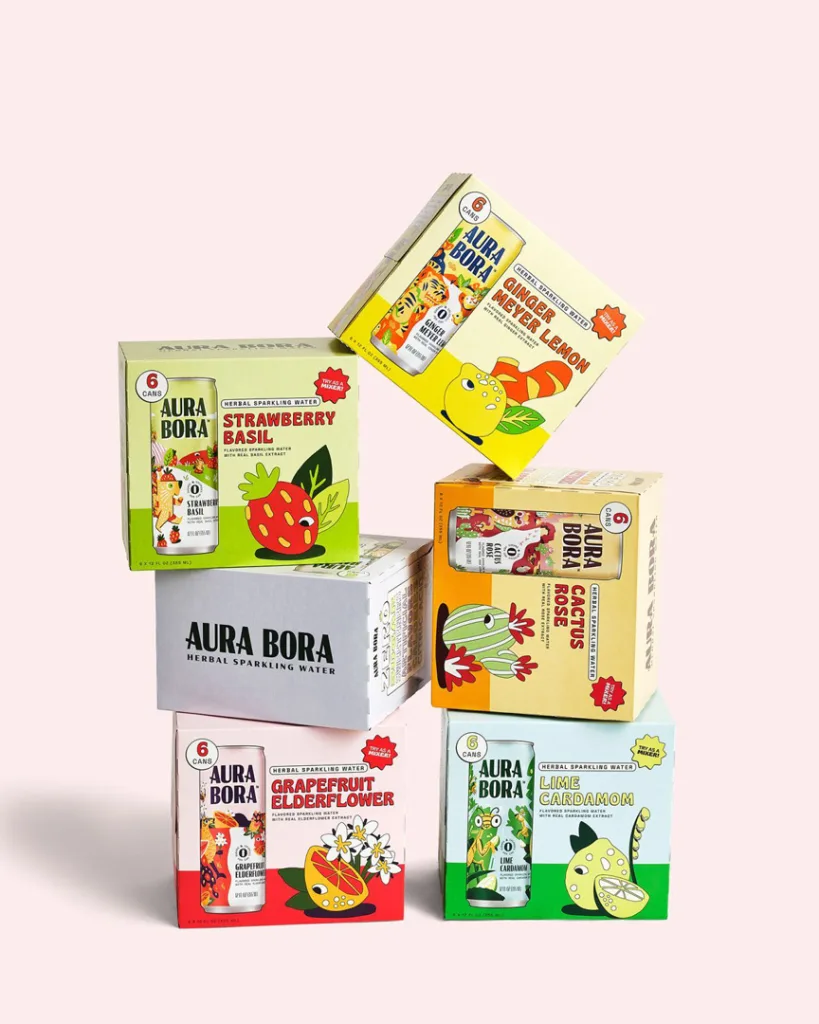
“It’s like David versus 10 Goliaths,” says Paul Voge, who cofounded the brand with his wife, Madeleine. “On days where I’m not completely overwhelmed by just the minutiae of running the business, we’ll sit back on a Friday night and be like, This is kind of insane.”
A gallon a day
If you’re a devoted fan of sparkling water, Voge is exactly who you want making it because he has long been an obsessive and voracious consumer. Working at an investment firm, he says his office pantry was stocked with high-end Whole Foods brands of all varieties—but when it came to seltzer, the only option on hand was LaCroix (which, for taste preferences or merely practical business reasons, he openly and comically dunks on).
“I was personally drinking about a gallon per day of sparkling water, and I thought that there’s no other category in my life where I’m just consuming a gallon of anything that I don’t enjoy consistently,” he says. “That was the eureka moment of, Hey—can there be room for a craft sparkling water?”
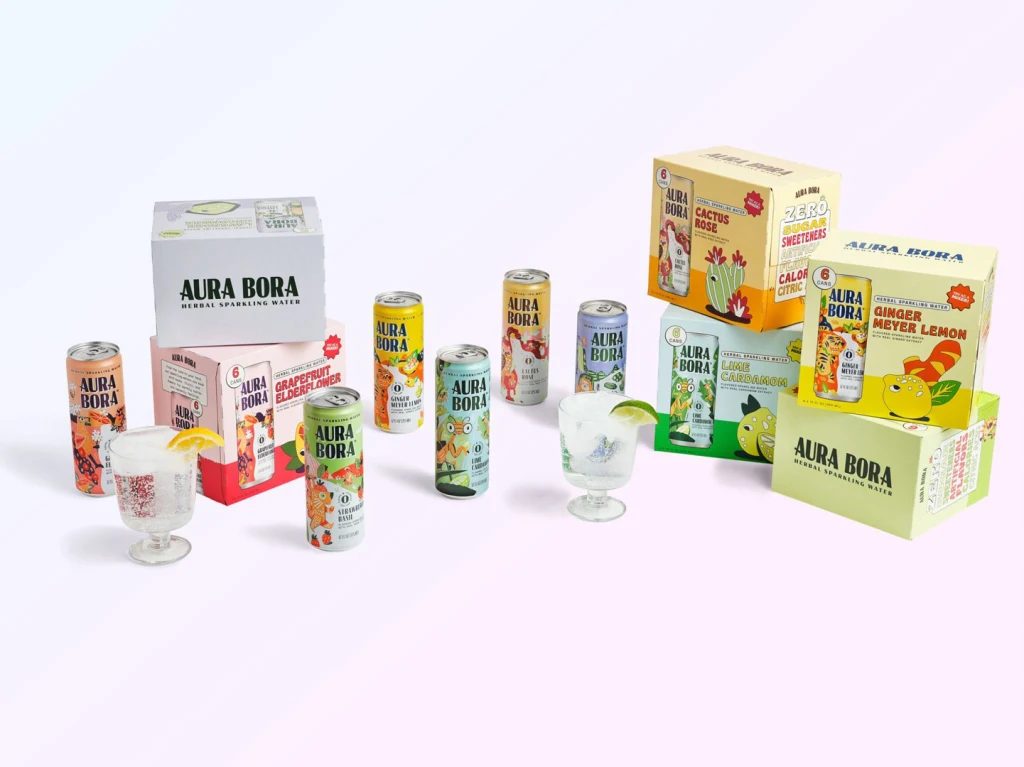
In the summer of 2019 the Voges fired up their SodaStream carbonator (back then they had one; today they own seven) and started experimenting by adding herbs, fruit, and other natural ingredients into the mix. (“The fact that on the first try we could make something that I liked more than LaCroix shows, frankly, how bad LaCroix is,” Paul Voge says without missing a beat.)
They developed an initial run of unexpected flavors seen nowhere else on the market—Lemongrass Coconut, Strawberry Basil, Peppermint Watermelon, Lavender Cucumber, and Cactus Rose—using real herbs, purified water, and no artificial sweeteners or citric acid.
They made some extremely strange design decisions (more on that in a moment). And then they placed an order for 31,000 cans.
“I remember doing the math,” Voge says. “I drink 10 a day. It’s like nine years worth of product [sparkling water for me]. That’s fine. If no one else wants it, I just did the most expensive bulk order of my life.”

The power of a waterskiing armadillo
According to data provided by Nielsen NIQ, in the past year U.S. consumers sipped $4.17 billion worth of sparkling water, up 4.1% from the previous year. The company identified 3,397 brands within that data set.
That is a lot of seltzer. And a lot of competition.
Voge’s thinking at the outset of Aura Bora was that sparkling water is a rare category in which the average consumer drinks more than one unit per day. Within that, he saw opportunity: If you’re downing multiple cans, you’re going to be willing to try a new brand—especially if it has a flavor and vibe you can’t get anywhere else.
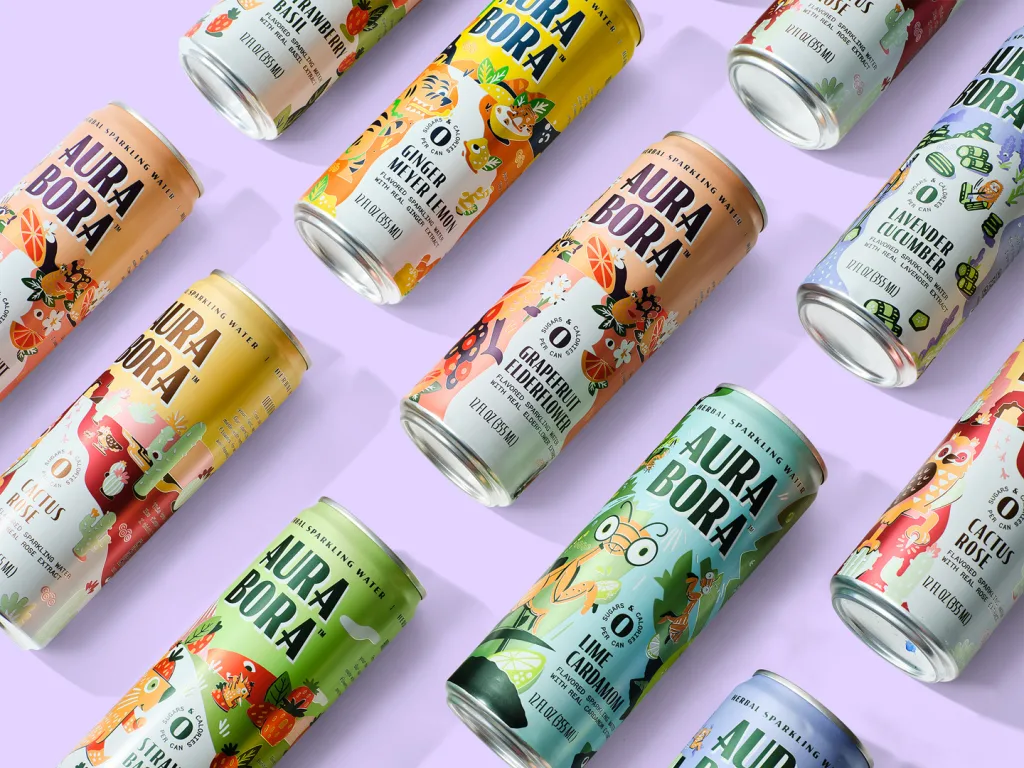
Moreover, strategically he wanted to go after the premium seltzer market. Category stalwarts like Perrier have been around since the late Victorian era and can sport a staid, refined (if not pretentious) design. But Aura Bora couldn’t—and didn’t have to. Inspired by the craft beer movement that redefined the brewing biz with its many category-breaking brands and aesthetics, the Voges set out to visually showcase how Aura Bora was different.
“We have these delightful but peculiar ingredients and delightful, peculiar flavors,” Paul Voge says. “Can we do the same thing with the packaging?”
They worked with Moxie Sozo on the branding, developing a surreal illustration style. Channeling cereal mascots of yesteryear, each flavor gets its own animal character. To date, cans have sported lime-toting praying mantises; owls; alligators; a sloth chopping up cucumbers to make a kayak out of them. During our conversation Voge produces a can of Raspberry Vanilla that just launched in a few hundred Krogers featuring a waterskiing armadillo.
“That’s just one animal that rarely gets airtime in CPG packaging, which is usually our first rule,” he says. “In some instances, they’re directly related to the ingredient. In a lot of instances, no—armadillos don’t eat raspberries.”
Pros in the consumer packaged goods space have long contended that the longer a consumer interacts with a product on a shelf, the higher the likelihood they’ll add it to their cart.
And all that whimsy is naturally good business.
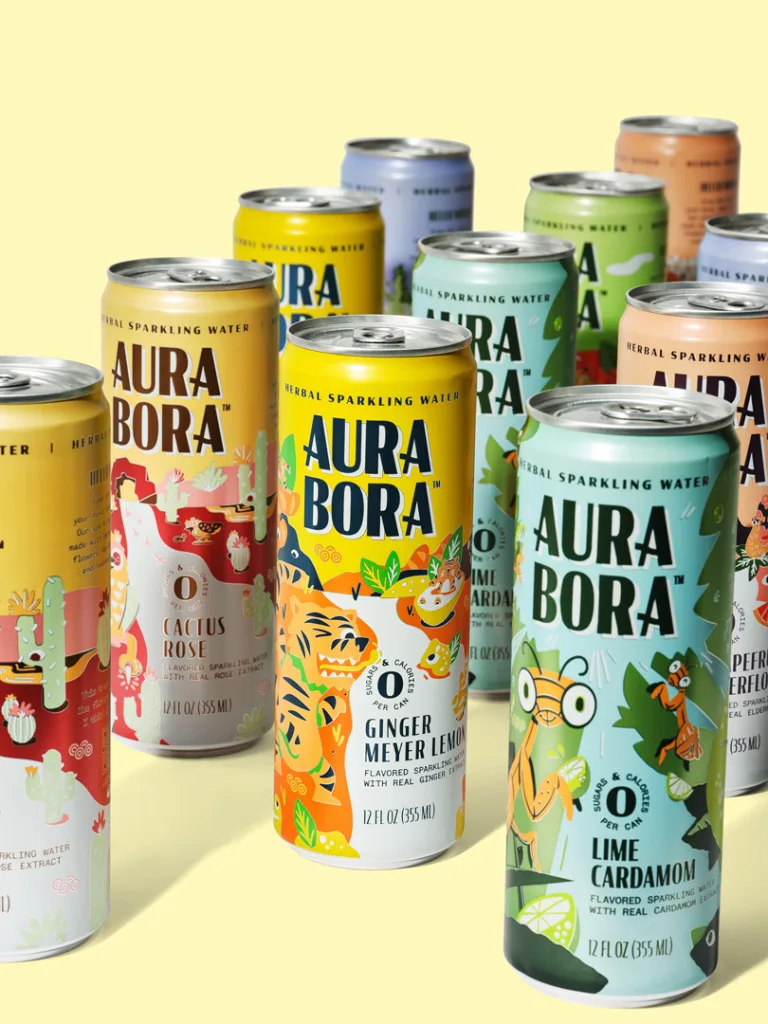
Green Bean Casserole and Olive Oil Martini seltzer
Aura Bora launched in 2020, and today can be found in major grocery stores across the country (in addition to the company’s direct-to-consumer store, which accounts for a small percentage of its overall business but serves as a test lab of new and often one-off flavors for superfans). From a PR perspective, an appearance on Shark Tank in 2021 was no doubt a major boon, with investor Robert Herjavec trading $200,000 for a 15% stake in the company. The Voges would go on to raise more than $10 million in a Series A funding round.
When it comes to Aura Bora’s success, Voge cites factors like the decline in alcohol consumption (especially among younger generations), as well as the fact that the brand launched during the COVID-19 pandemic—a time when CPG products were on center-stage display to consumers whose most exciting part of the week was an outing to the grocery store. But more than anything, Aura Bora’s debut came at a time when everything in the sparkling water category got more expensive to produce due to the pandemic’s impact on materials and production. In turn the category stalwarts upped their prices—and “all of a sudden, we go from looking like a totally out there, too-expensive product to, Oh, that’s a little more reasonable.”
Indeed, NIQ data puts the current average unit price of a sparkling water product at $2.60—a 37.6% increase over 2020. A rep for Aura Bora says its cans are priced between $1.99 and $2.49 in store.
Duane Stanford, industry analyst and editor and publisher of Beverage Digest, says people have been predicting a sparkling water “bubble” burst for a while now, yet instead he sees it as a category that has largely plateaued but remains stable, with some growth. Given how deeply the category has been commoditized, he believes Aura Bora’s focus on the premium consumer is a smart play. Interestingly, he cites Voge’s nemesis, LaCroix, as a key driver in that sector’s growth a decade ago. Though it had been around since the early ’80s, LaCroix reemerged as an alternative to the establishment with a curious and strange design, innovative marketing, social media strategy, retail theater.
But in the intervening years it really hasn’t changed all that much, comfortably settling onto the shelf alongside the brands it once disrupted. Now products like Aura Bora are the ones shaking things up, especially online, and particularly with viral launches like Green Bean Casserole seltzer or the brand’s collaboration with cult favorite olive oil Graza.
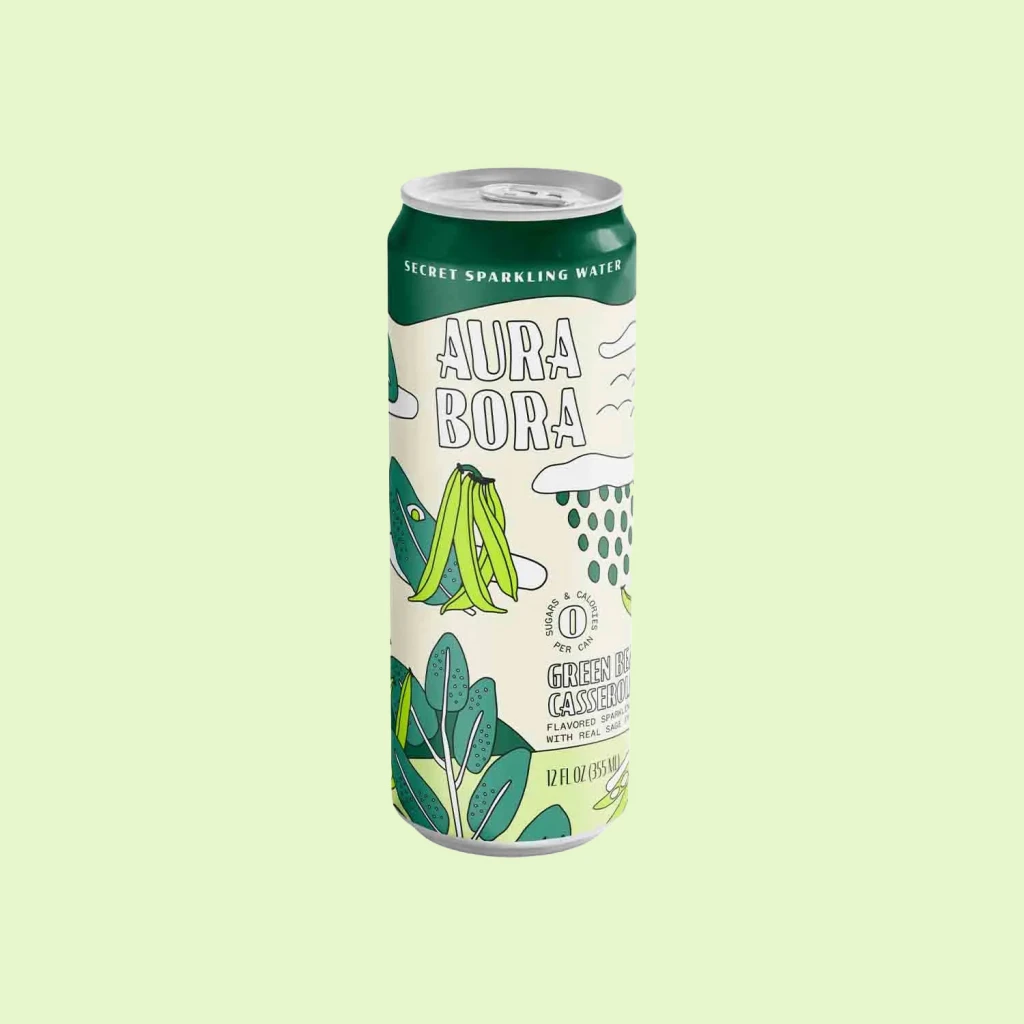
“If you’re an Aura Bora, you’re competing first of all with the marketing dollars of these companies, but you’re also competing against these massive distribution systems and trying to pull together your own at some cost, so it’s very challenging,” Stanford says. “The edge that a brand like Aura Bora has is that typically, they’re very good at social media, they’re very good at TikTok, these founder-led brands typically have really interesting stories—especially for social media.”
Can Aura Bora maintain its growth? Next up, Voge says his nimble team of 16 is doing a series of six-pack launches to see if consumers will buy the brand in mini bulk—but the rallying cry remains the same as it’s always been.
“It’s amazing that the whole reason for this business existing five years ago is still our most effective marketing message: ‘Are you tired of boring flavors from conventional sparkling water companies? We have great new flavors for you,’” Voge says. “And even though that seems like, Oh, eventually, that won’t work—I don’t know when it will stop working.”
Recognize your brand’s excellence by applying to this year’s Brands That Matter Awards before the final deadline, June 7.
Sign up for Brands That Matter notifications here.
